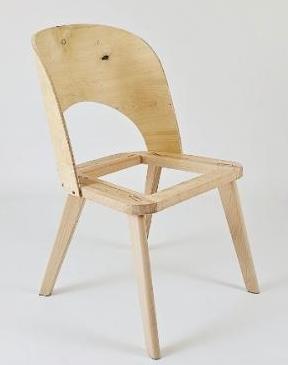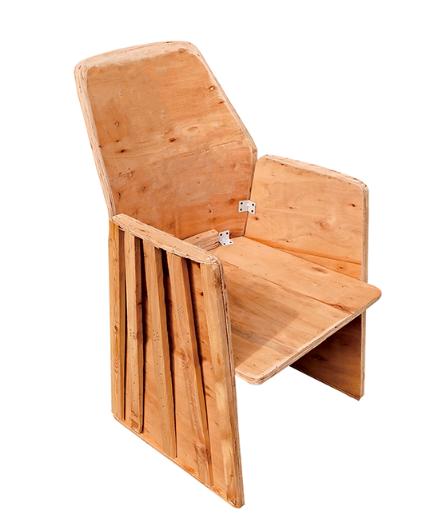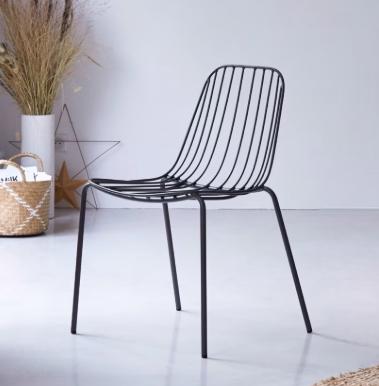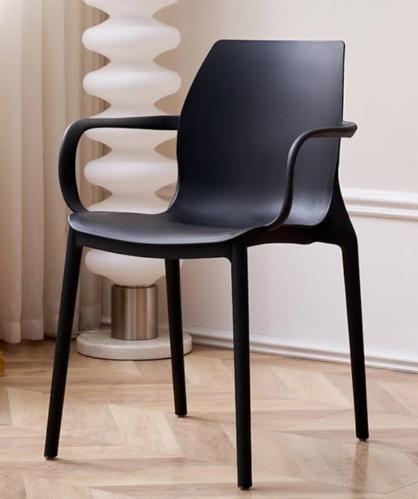 Nov 23, 2025
Nov 23, 2025
 Calvin Wong
Calvin Wong
 8
8
When choosing a dining chair, most people focus on the upholstery, the color, or the overall style. But the true backbone of any dining chair—the part that determines how long it will last, how stable it feels, and how safe it is—is the chair frame. Regardless of how beautiful a chair looks on the outside, its quality ultimately depends on what lies beneath the surface.
Dining chair frames are made from four major material categories: wood, metal, plastic, and hybrid constructions. Each has its own strengths, weaknesses, and best-use scenarios. In this comprehensive guide, we’ll break down how each frame material performs in terms of durability, appearance, cost, maintenance, and design flexibility—so you can confidently choose the best option for your dining space or furniture business.

Wood is one of the oldest and most respected materials used in furniture making. A well-constructed wooden dining chair can last decades and even become a family heirloom.
Oak – strong, dense, and long-lasting
Ash – flexible, good for curved backrests
Walnut – premium, rich color, high stability
Beech – popular for European-style chairs
Rubberwood – affordable and sustainable
Plywood / Bentwood – allows curved, Scandinavian forms

Wood brings natural warmth and fits almost any interior—from rustic farmhouses to modern Scandinavian dining rooms.
High-quality hardwood frames offer exceptional load-bearing performance and structural integrity.
Minor scratches, dents, and color fading can often be repaired.
Wood can be carved, bent, painted, stained, or left natural.
Premium hardwood chairs can be expensive.
Wood can expand, contract, or warp if not properly treated.
Polishing, avoiding excessive moisture, and checking joints may be necessary.
✔ Traditional homes
✔ Premium dining rooms
✔ Durable, long-term furniture
✔ Scandinavian or minimalist décor

Metal dining chairs have become increasingly popular in modern homes due to their sleek aesthetics and superior strength.
Steel – strongest and most common
Iron – heavy and classic
Aluminum – lightweight and rust-resistant
Stainless steel – premium, modern, corrosion-resistant
Metal frames can handle heavy use and high weight capacities.
With anti-rust coatings or powder coating, metal frames can last many years.
Metal allows thin profiles and geometric shapes that wood cannot achieve.
A simple wipe is usually enough to keep metal looking clean.
Some homeowners feel metal looks less "homey" than wood.
Powder-coated finishes can chip if mishandled.
Metal-on-tile contact may produce sound unless felt pads are added.
✔ Modern and industrial interiors
✔ Restaurants and commercial environments
✔ Heavy-duty, high-traffic usage
✔ Sleek, minimalist designs

Plastic frames have evolved dramatically in the last decade, becoming stylish, durable, and surprisingly comfortable.
Polypropylene (PP) – durable, lightweight, widely used
Polycarbonate (PC) – crystal clear, strong
Acrylic – stylish but less durable than PC
Recycled plastics – eco-friendly options
Perfect for families with kids or for multipurpose dining areas.
Plastic frames tend to cost less than wood or metal.
Many plastic designs can be used both indoors and outdoors.
Allows for creative, ergonomic, or futuristic designs.
Plastic can flex or crack under prolonged heavy use.
UV exposure can cause discoloration over time.
Some consumers still consider plastic less “high-end”.
✔ Casual dining rooms
✔ Outdoor dining areas
✔ Cafés and restaurants
✔ Budget-conscious shoppers
Hybrid frames combine two or more materials—most commonly wood + metal, metal + plastic, or wood + plastic.
They balance strength, style, and cost. A typical example is a chair with:
metal legs for stability
wooden seat/back for warmth
plastic shell for ergonomics
Use metal for durability, wood for beauty, plastic for comfort, etc.
Designers can mix textures and colors.
Hybrid designs reduce material costs without sacrificing style.
From mid-century modern to futuristic minimalism.
Poor bonding between materials can reduce stability.
Different materials react differently to heat, humidity, or wear.
Metal might stay perfect while wood fades, or plastic scratches.
✔ Trendy modern homes
✔ Buyers wanting style + durability
✔ Mid-range furniture markets
✔ Commercial settings needing both comfort and strength
| Feature | Wood | Metal | Plastic | Hybrid |
|---|---|---|---|---|
| Durability | ★★★★☆ | ★★★★★ | ★★★☆☆ | ★★★★☆ |
| Aesthetic appeal | ★★★★★ | ★★★★☆ | ★★★☆☆ | ★★★★★ |
| Cost | $$$–$$$$ | $$–$$$ | $–$$ | $$–$$$ |
| Maintenance | Medium | Low | Low | Medium |
| Weight | Medium | Heavy/Medium | Light | Medium |
| Comfort | High | Medium (needs cushion) | Medium | High |
| Outdoor use | No | Yes | Yes | Partially |
| Customization | High | Medium | High | Very High |
Choosing the right frame depends on your priorities:
→ Choose metal or hardwood
→ Choose wood or hybrid
→ Choose plastic
→ Choose hybrid
→ Metal or hybrid chairs hold up best
Metal frames—especially steel and stainless steel—offer the highest structural strength and longevity.
Yes. Hardwood chairs are long-lasting, repairable, and visually appealing, making them a premium option for long-term use.
Good-quality polypropylene or polycarbonate chairs are surprisingly durable. However, they are not as strong as wood or metal under heavy use.
Plastic or hybrid frames are lightweight, easy to clean, and more kid-friendly.
Absolutely. Mixing wood and metal chairs is a popular trend in modern interiors.
Plastic and powder-coated aluminum frames perform best outdoors.
Look for:
Solid joints (mortise & tenon, strong welds, metal brackets)
Even weight distribution
Minimal wobbling
Smooth finishing
Manufacturer’s load capacity rating